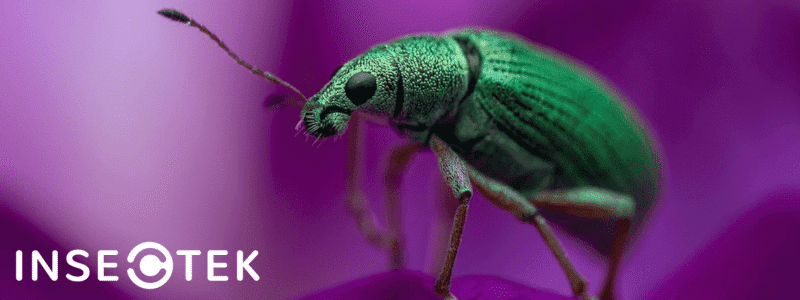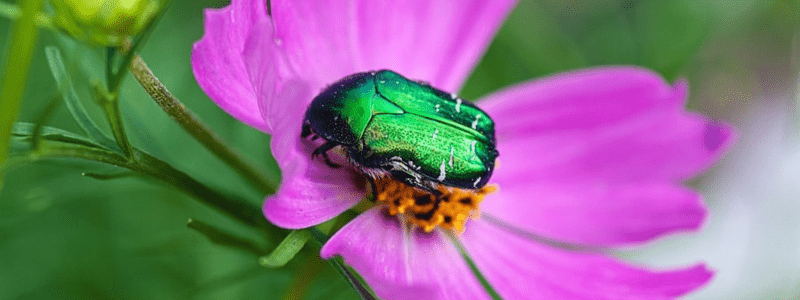Because June Bugs are such a loud nuisance to humans during the summer, they are often exasperating. Additionally, their larvae can cause damage to soil, and adults can harm your plants, lawn, and trees.
In this blog, we’ll cover:
- What type of bug is a June bug?
- Are June bugs harmful to humans?
- How June bugs harm your property
- Signs of June bug infestations
- How to prevent June bugs from getting in the house
What Type of Bug is a June Bug?
A June bug is also known as a June beetle, chafer beetle, or its family name of Scarabaeidae, and is referred to by the month they typically appear – June.
June bugs are typically large and shiny, with a green or black sheen. Though many sub-varieties of beetles in the family are referred to as June bugs, the most prevalent ones all have similar behaviors and effects on homes and properties.
June bugs are typically a healthy food source for animals and other insects and profoundly positively affect a local ecosystem. However, this does not make them any less annoying or destructive to homeowners’ plants and properties.
Are June Bugs Harmful to Humans?

No – June bugs are harmless to humans, as they do not bite, sting, or carry any diseases. However, they can still do plenty of damage to your plants and lawn.
Additionally, because they are a great source of food for many animals and other pests, these insects can become a huge problem during the summer month for you and your family.
Small animals such as skunks and raccoons eat June bugs, and other insects such as spiders, ants, and other small beetles have been known to eat them as well occasionally.
How June Bugs Harm Your Property
Even though June bugs are not a threat to humans directly, they are highly destructive to your property.
June bugs harm your property in these ways:
- Many predators eat June bugs, including other pests like spiders and wasps, causing more potential for further infestation.
- June bug larvae will destroy your grass and shrubs.
- Adult June bugs will eat the trees and plants near your property.
- Dead June bugs will attract ants and other insects that will eat their carcasses.
Signs of June Bug Infestations

Here are some of the top ways you can tell if you have a June bug problem:
- Holes in the leaves of shrubs and trees
- Dead spots on your lawn or by the roots of plants
- June bugs flying around your property
- June bug carcasses
- An increase in spiders and other pests
How to Prevent June Bugs from Getting in the House
June bugs will happily buzz around any property they infest, meaning there will eventually be adult June bugs in your house if you aren’t careful.
To prevent June bugs, try the following:
- Switching to lights or bug bulbs – these deter June bugs
- Bug zappers, traps, or dish soap traps
- Birdbaths to scare June bugs away
- Regular pest control to keep your property safe
June bugs are not easy to keep off your property using DIY methods. Once you have a June bug infestation, it may require professional pest control services to keep them away correctly.







